Have you ever wanted to know more about bees? Those fuzzy-looking black-and-yellow insects have a very important role in our lives. Bees are responsible for pollinating plants, which helps them grow and reproduce. This directly affects our food supply, and it is why we have all of those delicious fruits and vegetables we eat every day. When you see bees on the move around town, they are actually hard at work for us! These buzzworthy facts about bees will give you a new perspective on them.
FREE DOWNLOAD
Facts About Bees Google Slides
Want to share these facts about bees with your classroom? Grab our free Google Slideshow.
Our Favorite Facts About Bees
1. Bees have five eyes.

Bees have two large eyes on the sides of their heads and three small eyes on top. That is some mighty powerful eyesight!
2. Bees have two stomachs.
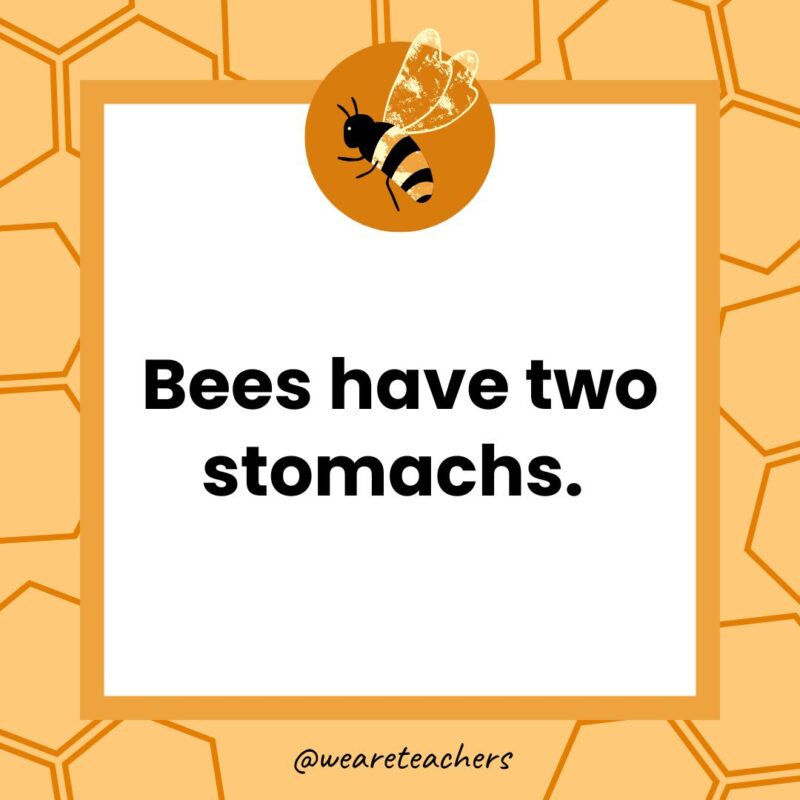
One is for eating, while the other stores nectar and transforms it into honey. They can fit in extra snacks!
3. Bees can see ultraviolet light.
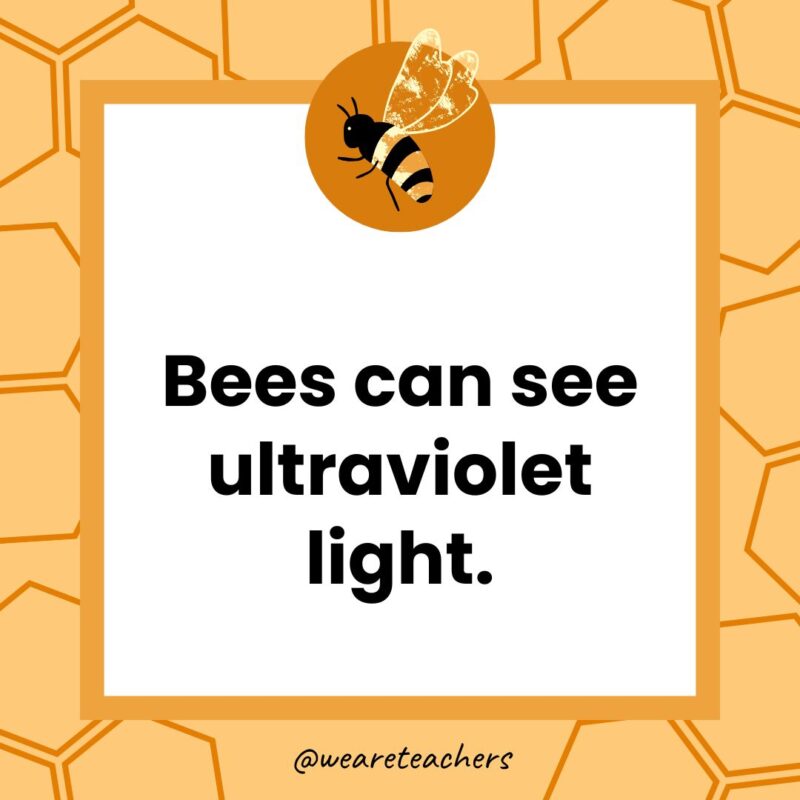
This light helps bees find patterns on flowers that are invisible to humans. It’s like a secret code for bee eyes only.
4. Bees are especially attracted to purple and blue flowers.

This is because these colors are easiest for them to see. They cannot see the color red, which is a surprising fact about bees.
5. A bee’s wings beat about 200 times per second.

This helps bees fly quickly and easily hover in the air. They fly up to 15 miles per hour!
6. Bees make a buzzing sound as they flap their wings.
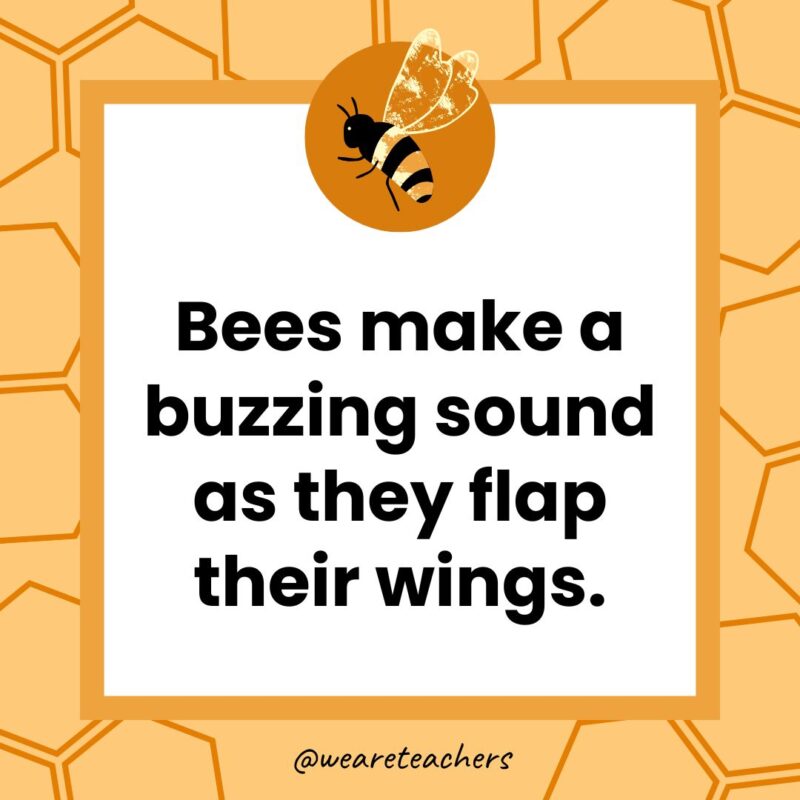
The next time you hear a bee buzz, you will know it’s because the bee is on the move!
7. Bees dance to communicate with one another.
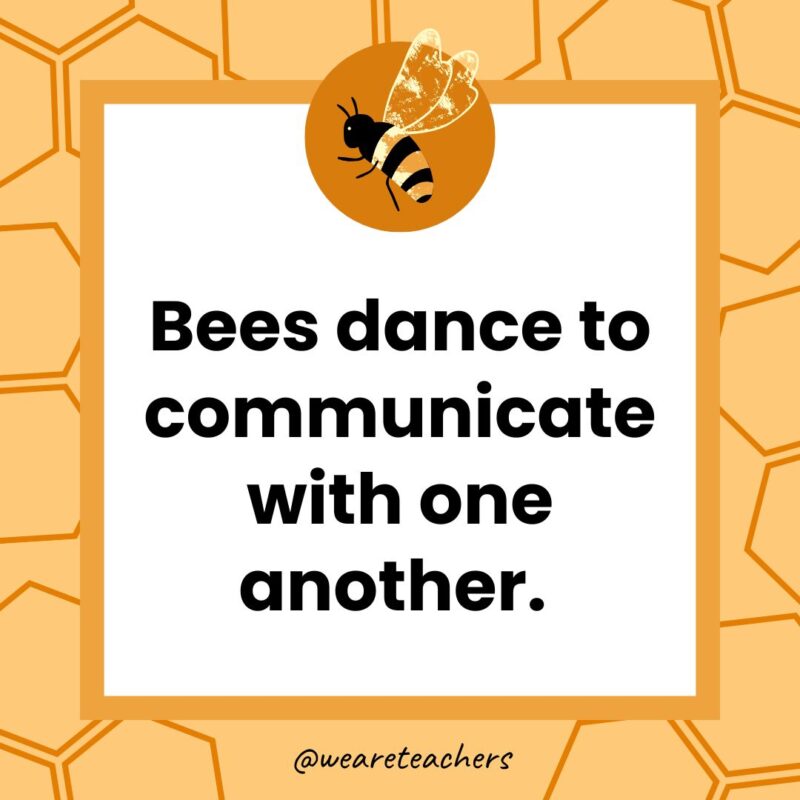
Otherwise known as the waggle dance, this movement helps their bee friends find food, stay safe, and more. Dance party, anyone?
8. Bees’ bodies are covered in branched hairs.
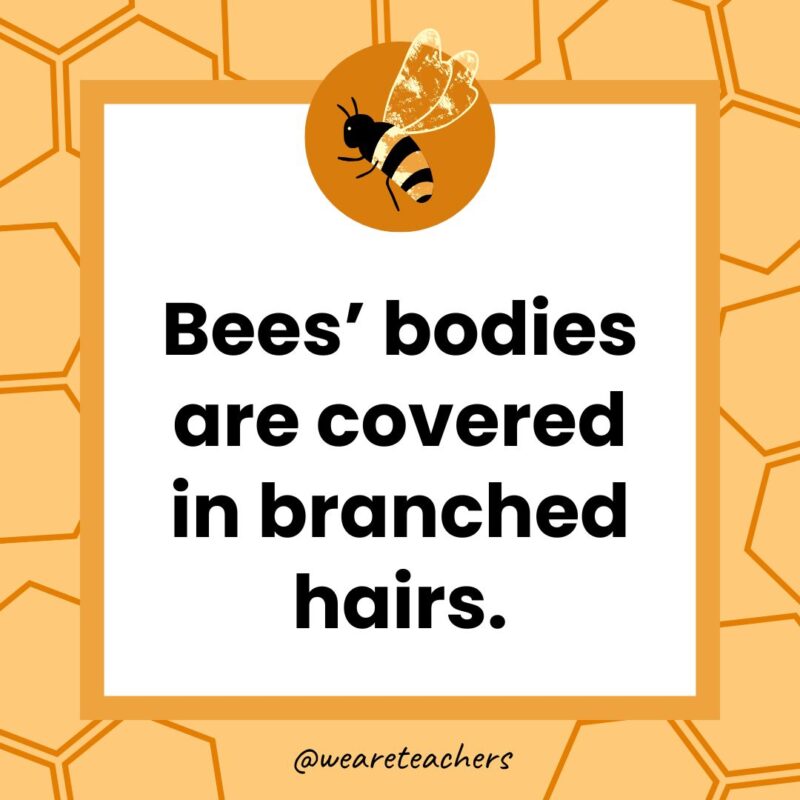
These hairs have split ends and help bees gather and transfer pollen. They are like little scoops.
9. Honeybee hives accommodate three types of bees.
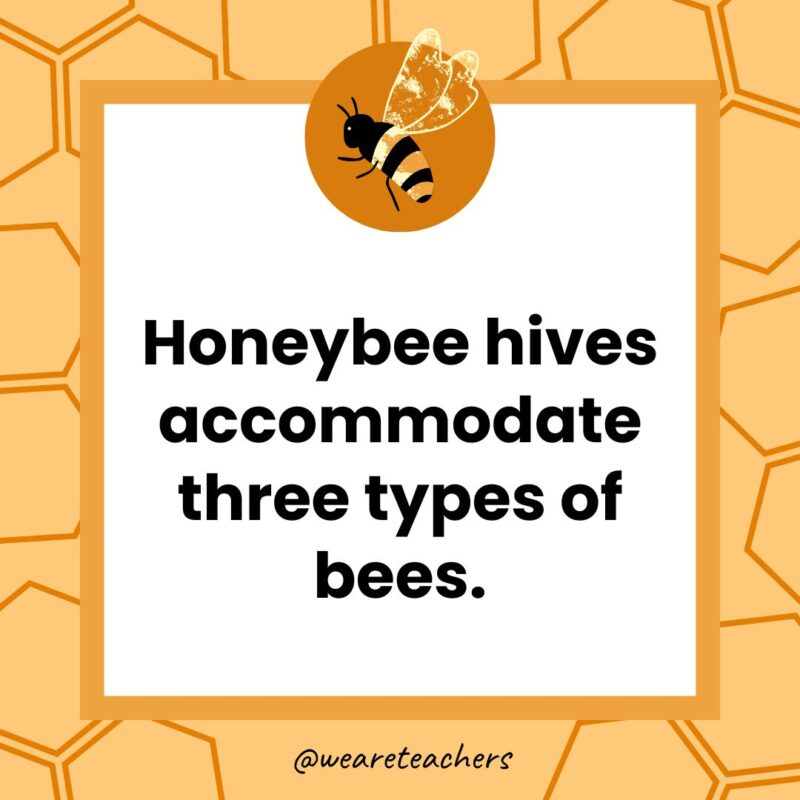
Each hive contains one queen bee, hundreds of drones, and thousands of worker bees.
10. Anywhere from 60,000 to 80,000 bees can live in one hive.

The population fluctuates depending on the seasons. Summer is the busiest time, while winter is the quietest.
11. Only queen bees can lay eggs.
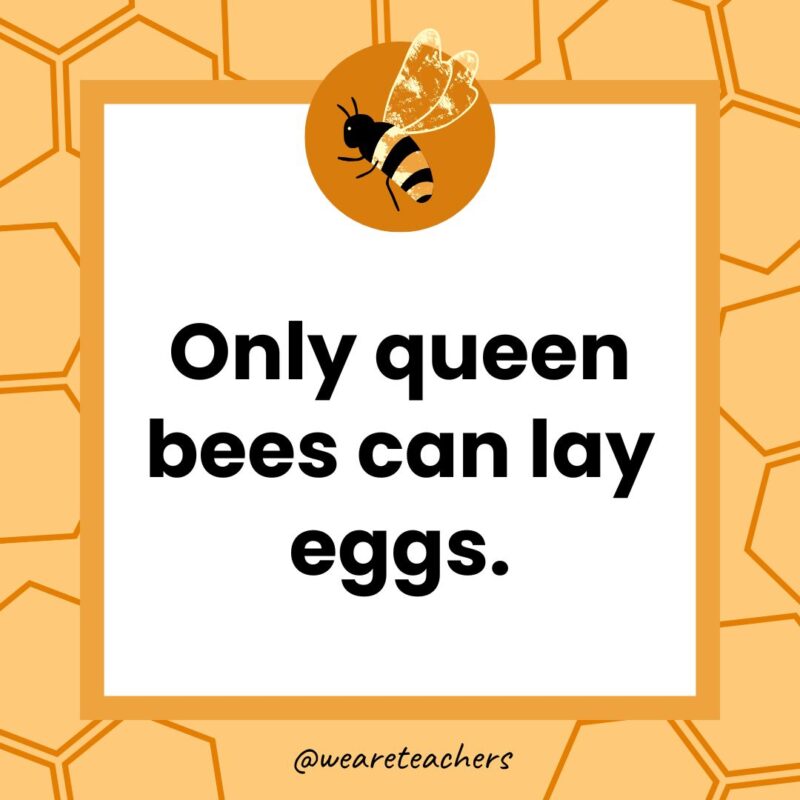
She creates all of the babies for the hive.
12. Queen bees can lay up to 2,000 eggs per day.
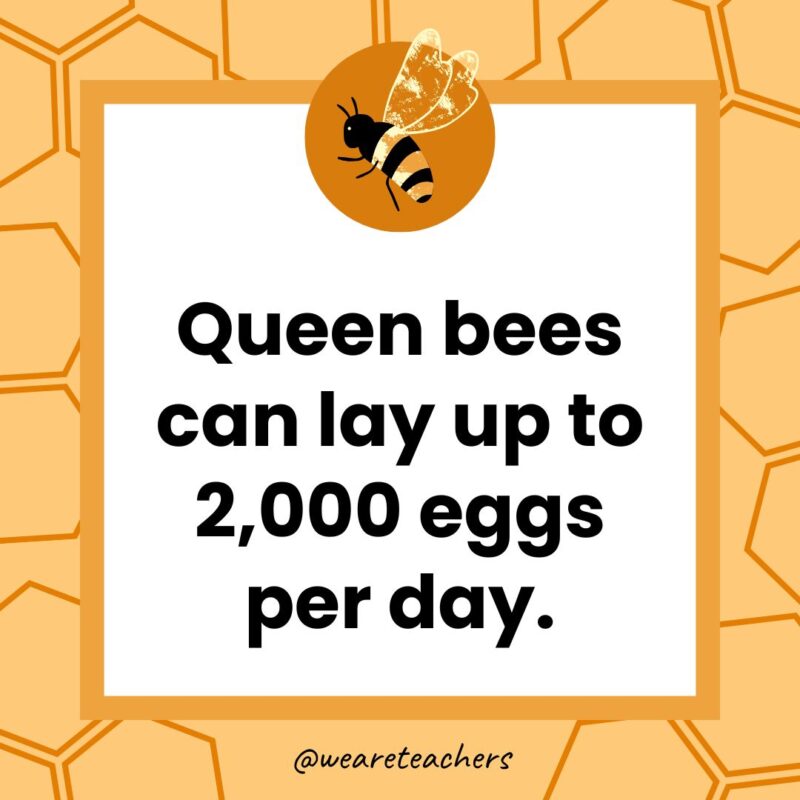
This is especially true during the busy summer season.
13. Worker bees are all female bees.
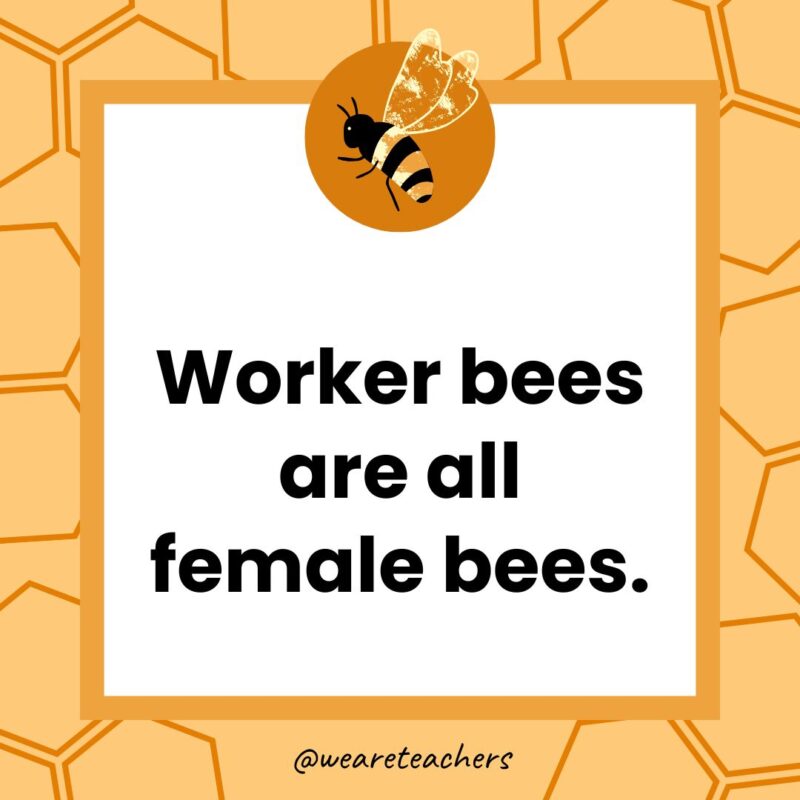
Worker bees are in charge of foraging, nursing, and building the hive. In other words, they keep the hive alive!
14. Male bees are called drones.
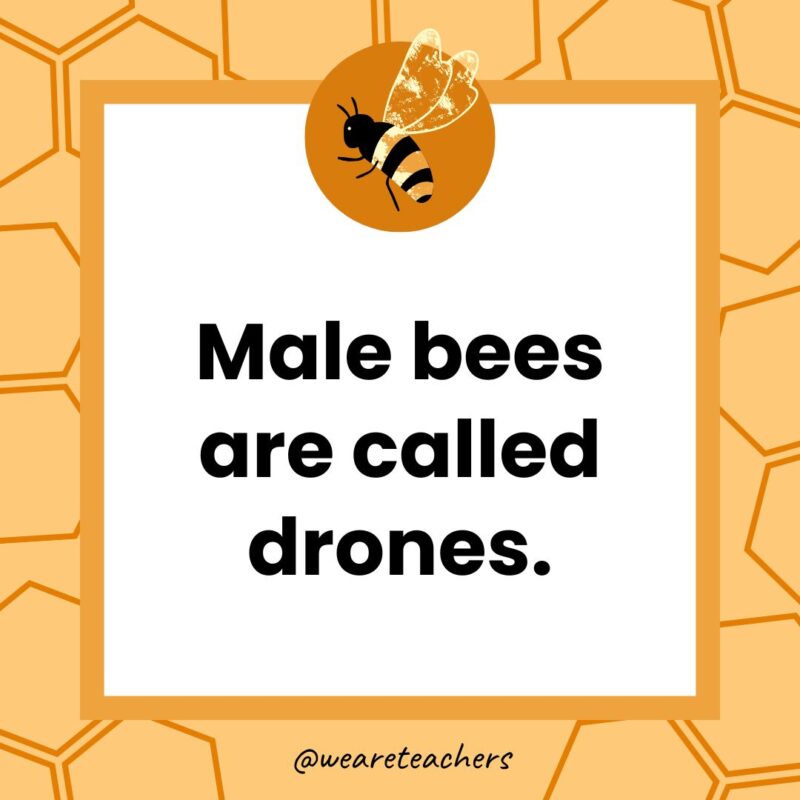
Their main job is to mate with the queen bee. They are larger than females and do not have a stinger.
15. Female honeybees die after they sting someone.
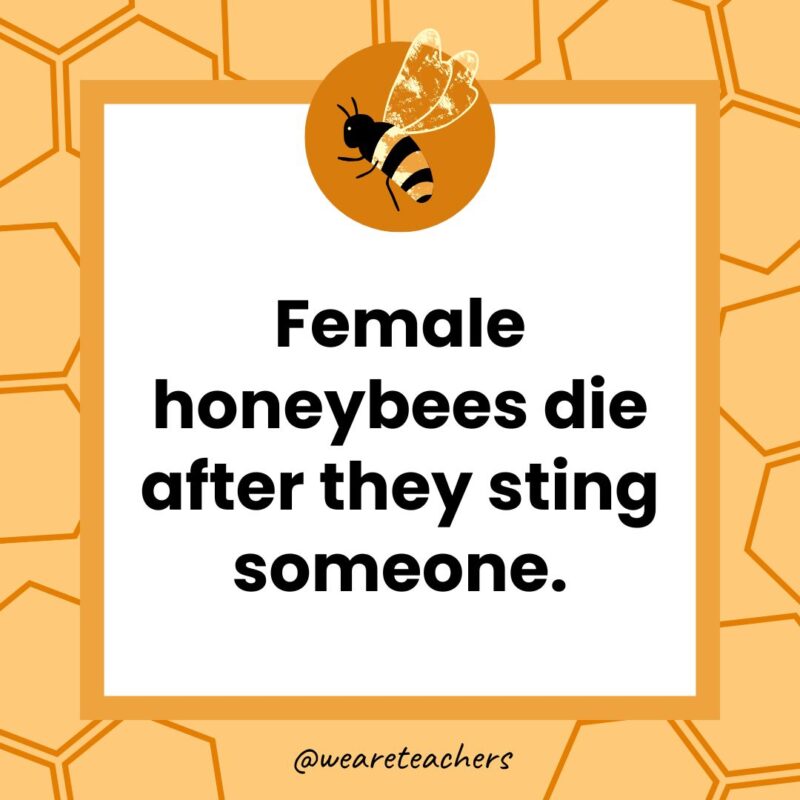
If a honeybee stings a human, its barbed stinger remains in the skin and tears away from the bee’s body, causing it to die.
16. Queen bees can live up to 5 years.
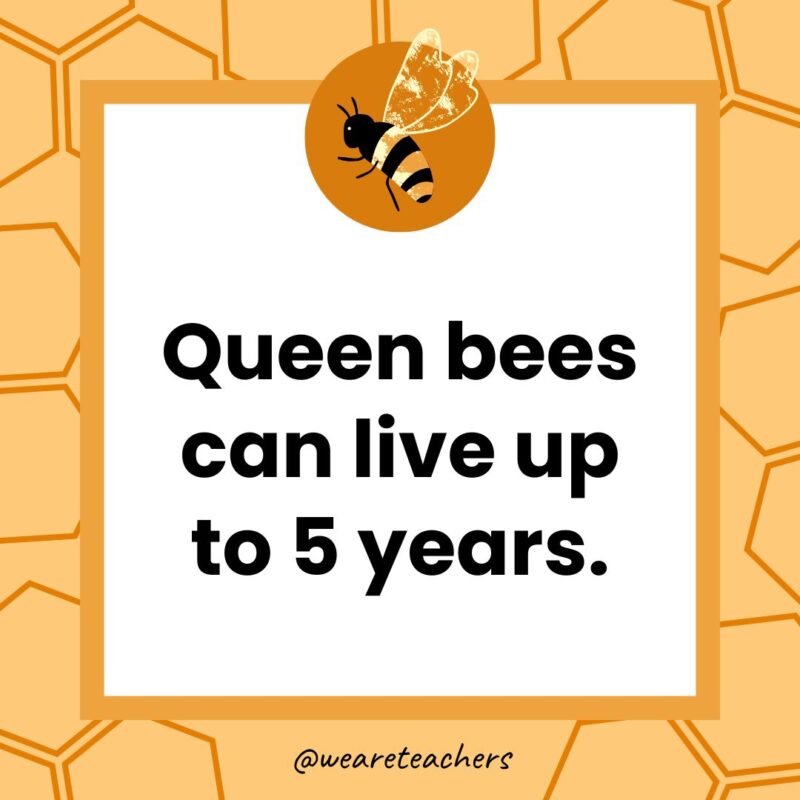
In contrast, worker bees only live for a few weeks to a few months.
17. It takes approximately 12 worker bees’ entire lives to make one teaspoon of honey.
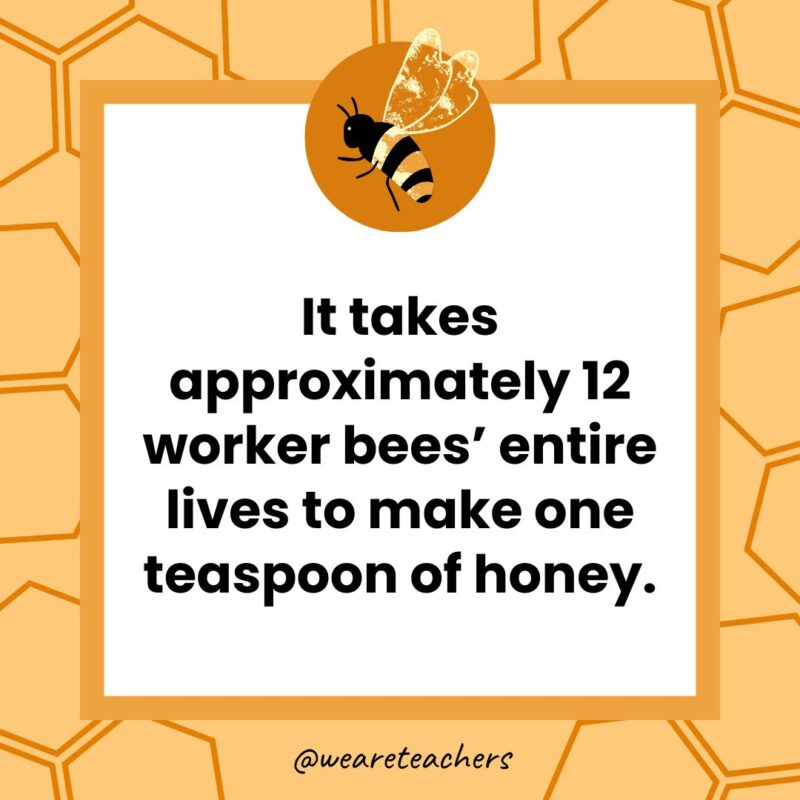
They are truly dedicated to their jobs!
18. Bees have an extremely strong sense of smell.

They have 170 odor receptors, which is well above a dog’s sense of smell. This helps them smell different types of flowers when looking for food.
19. Bees eat nectar and pollen.
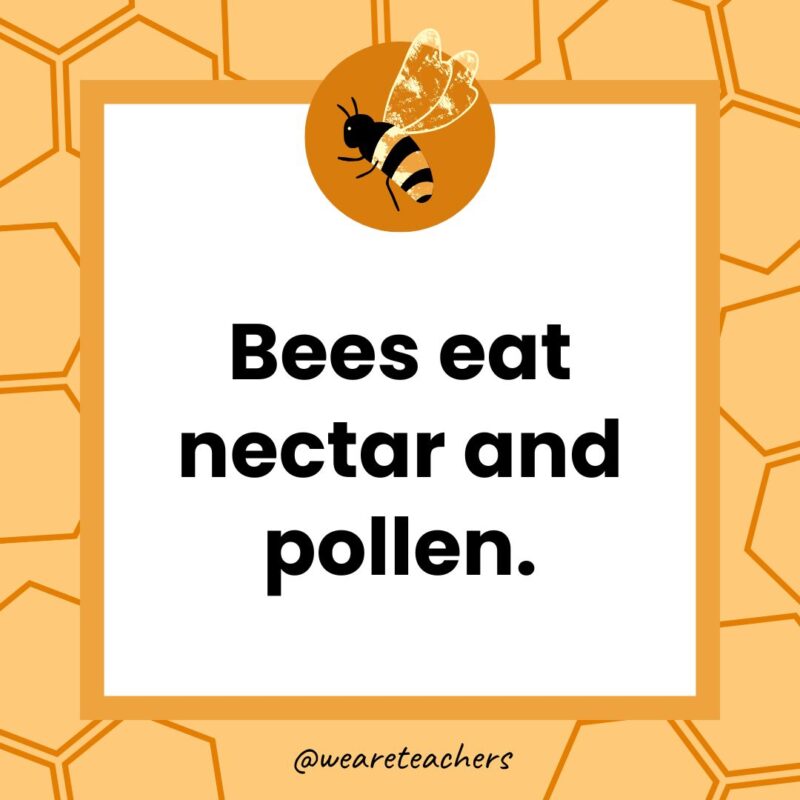
They collect both from plants and trees with flowers. This is why you will often see them buzzing around flower gardens.
20. Bees visit up to 5,000 flowers in a day.
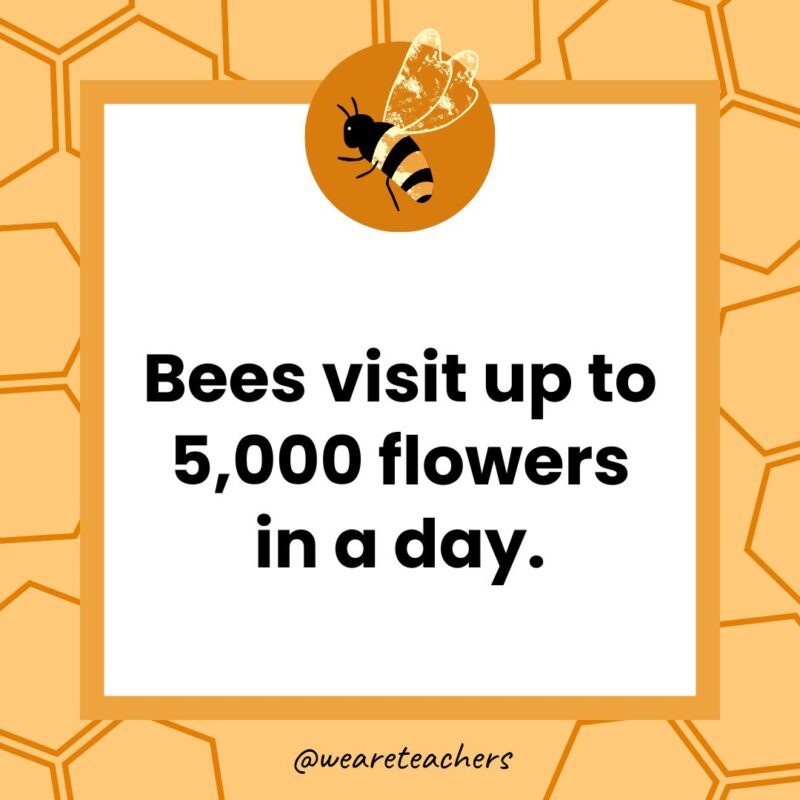
This is dependent on the species and availability of blooms. They sure are busy insects!
21. Forager bees can fly up to 5 miles from their hive.

They travel far and wide searching for food. That’s a lot of work for a meal!
22. Bees pollinate about 75% of all flowering plants.
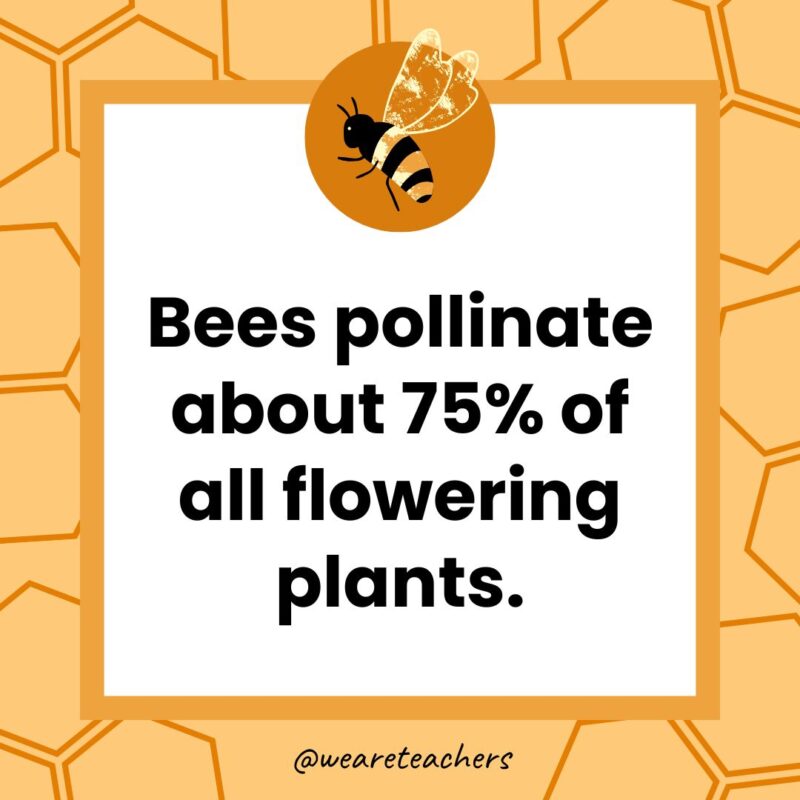
This includes most of the fruits, vegetables, and nuts that make it into our food supply.
23. One-third of the food we eat relies directly or indirectly on bee pollination.
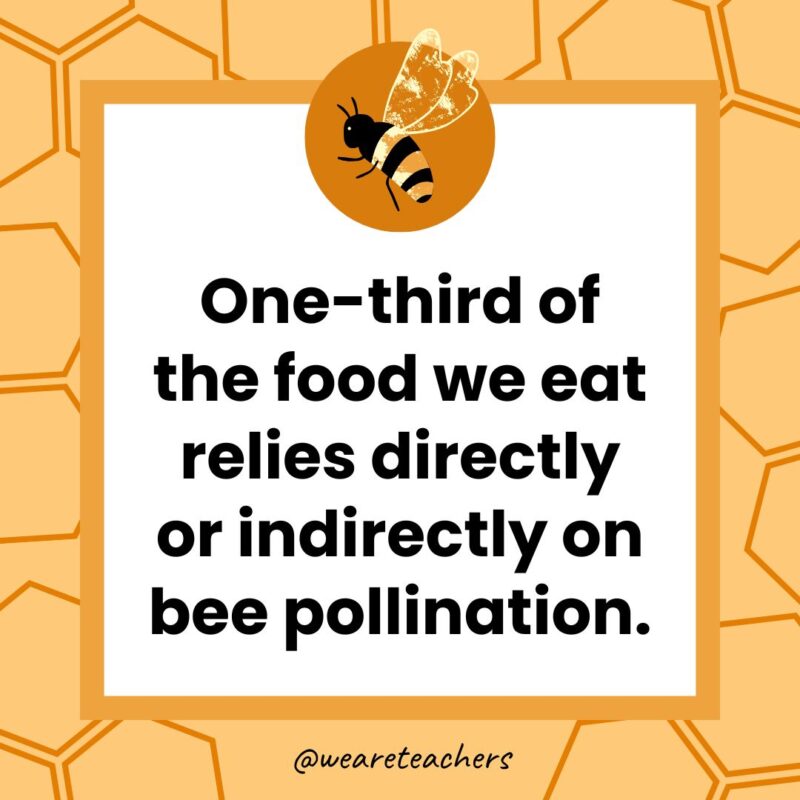
This is another reason why they are so important to our survival.
24. Bees turn nectar into honey.
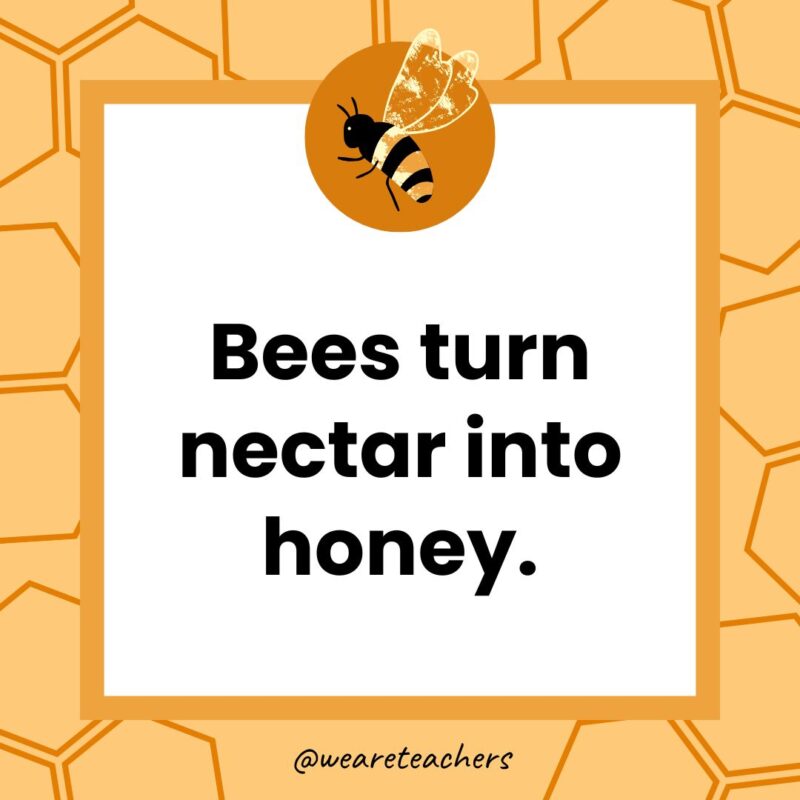
Bees add enzymes and dry up moisture by fanning their wings at super speeds. Then we get to eat this tasty treat!
25. Made from bee-consumed honey, beeswax has many uses for humans.
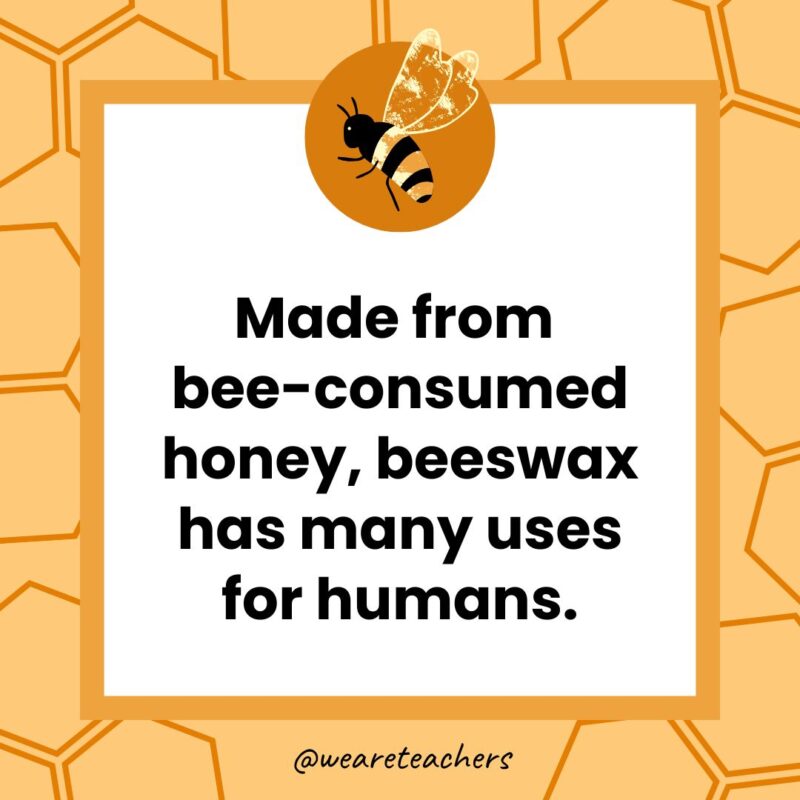
Beeswax is used to make candles, body lotion, furniture polish, candy coating, and more!
26. Bees are most active in the spring and summer.
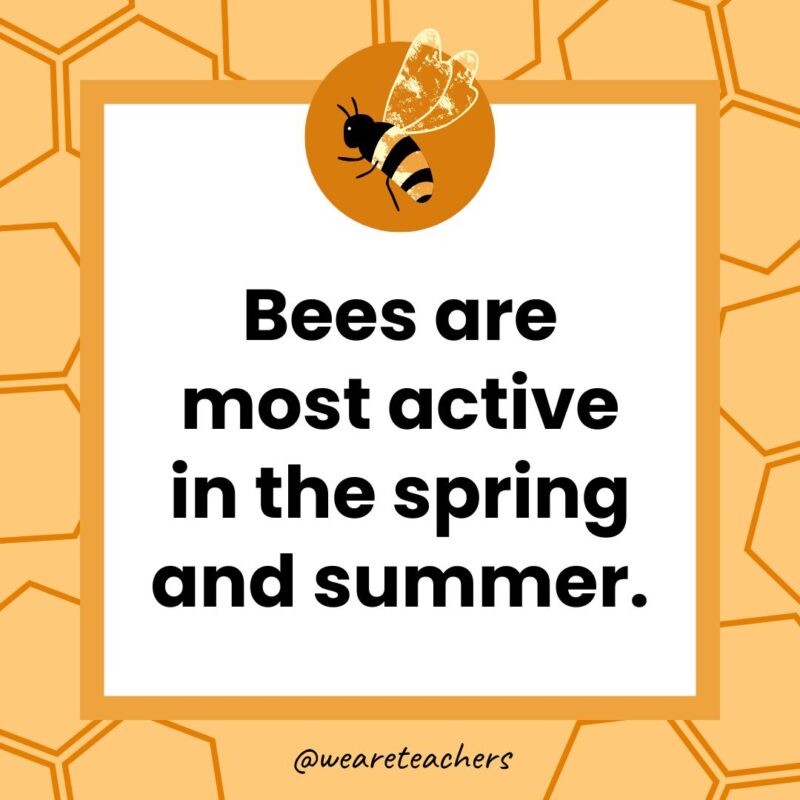
Flowers are in full bloom at this time, providing them with nectar to collect.
27. Honeybees stay active year-round.
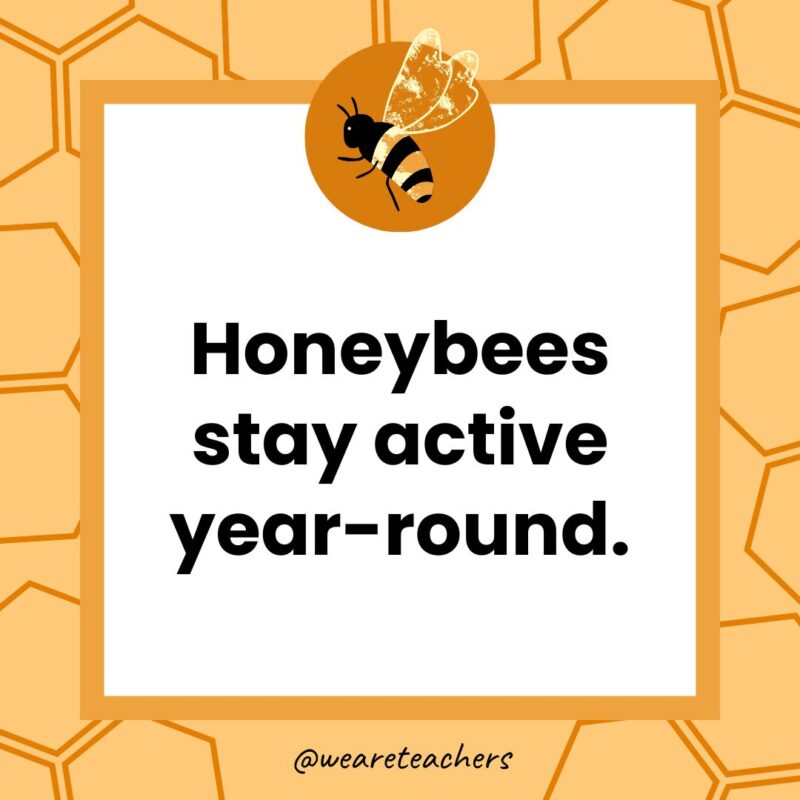
In the winter, honeybees eat stored honey. They snuggle up together in the hive to stay warm.
28. Honey never spoils.
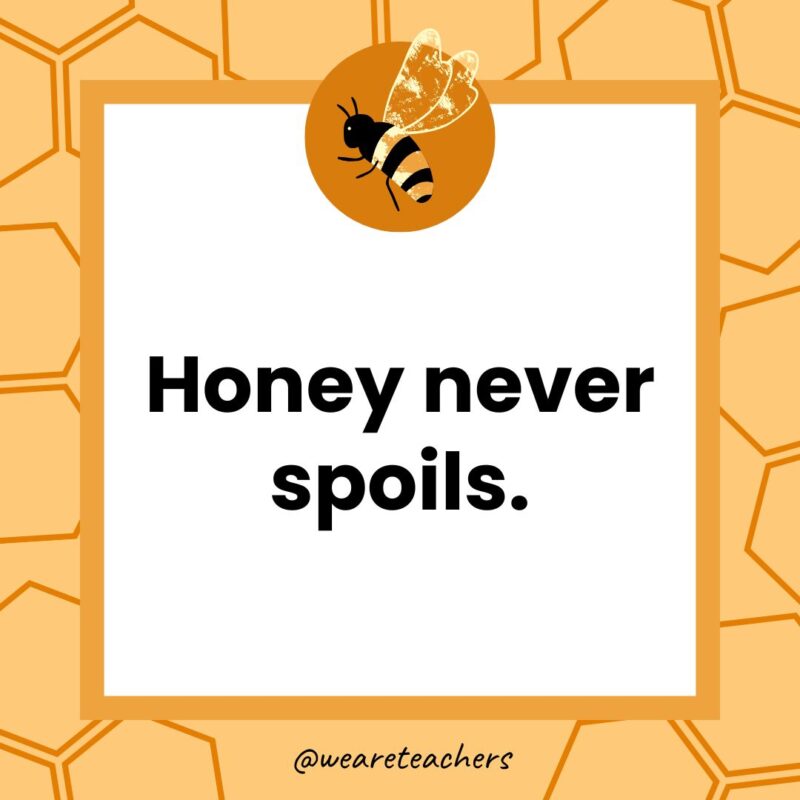
Edible honey has even been found in ancient Egyptian tombs from thousands of years ago!
29. Beekeepers harvest excess honey.
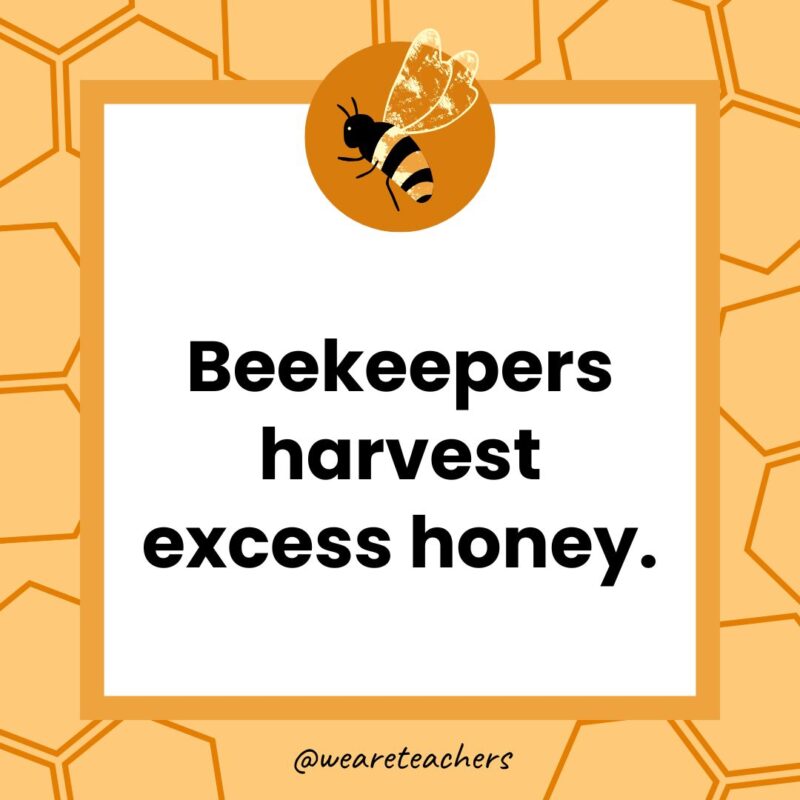
They also leave plenty of it in the hive to keep the bees alive and well.
30. Not all bee larvae are fed the same food.
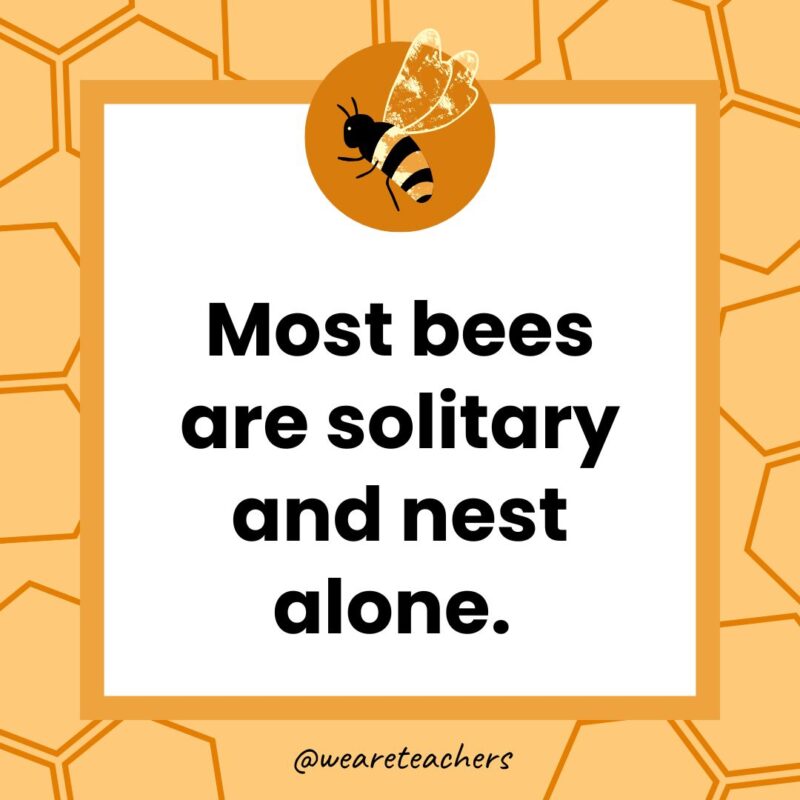
They are fed royal jelly, pollen, or honey depending on their future role.
31. When a queen bee dies, worker bees can create a new queen by feeding the bee larvae “royal jelly.”
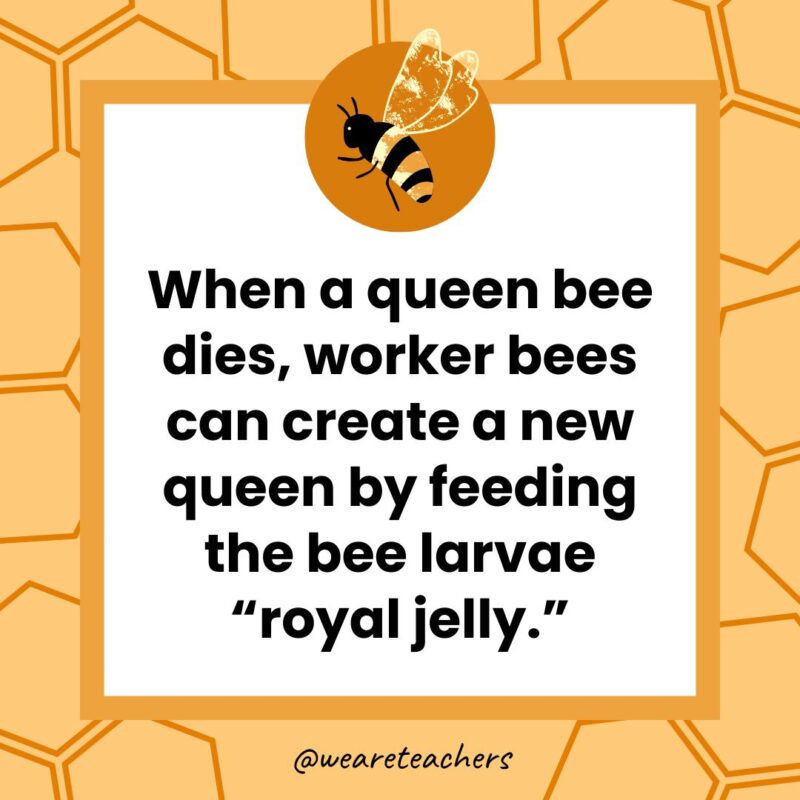
Royal jelly leads to the development of this special leader.
32. There are over 20,000 species of bees.
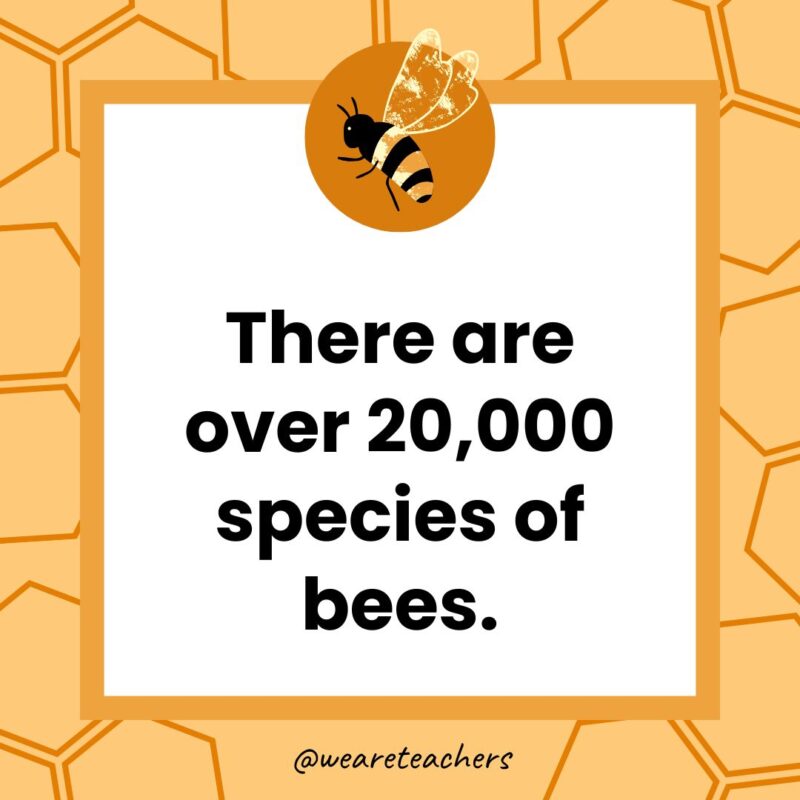
That’s a huge amount of diversity within the bee population!
33. Bees face serious threats to their survival.
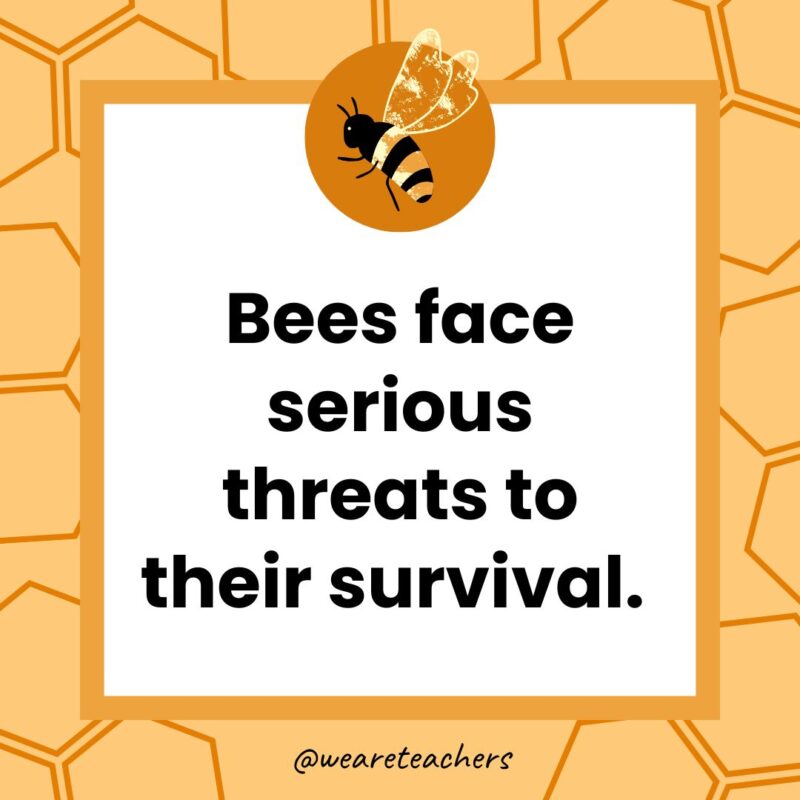
The decline of the bee population is due to pesticides, habitat loss, disease, and climate change.
34. Humans can help save the bee population.
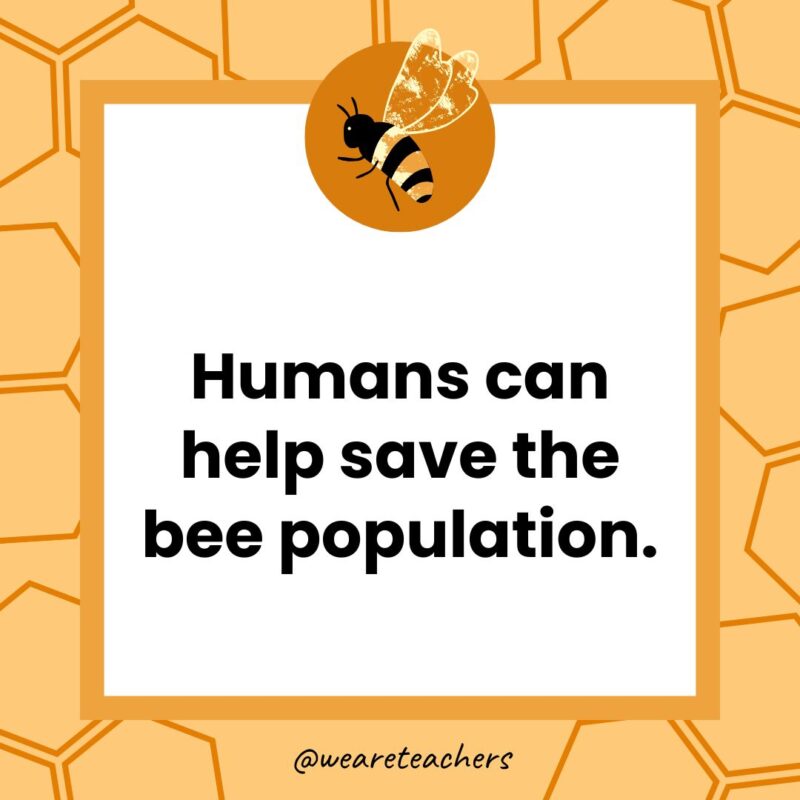
We can create pollinator-friendly gardens by planting native flowers without pesticides.
35. Most bees are solitary and nest alone.

They live in holes in wood, soil, or hollow stems.
36. May 20 is World Bee Day.
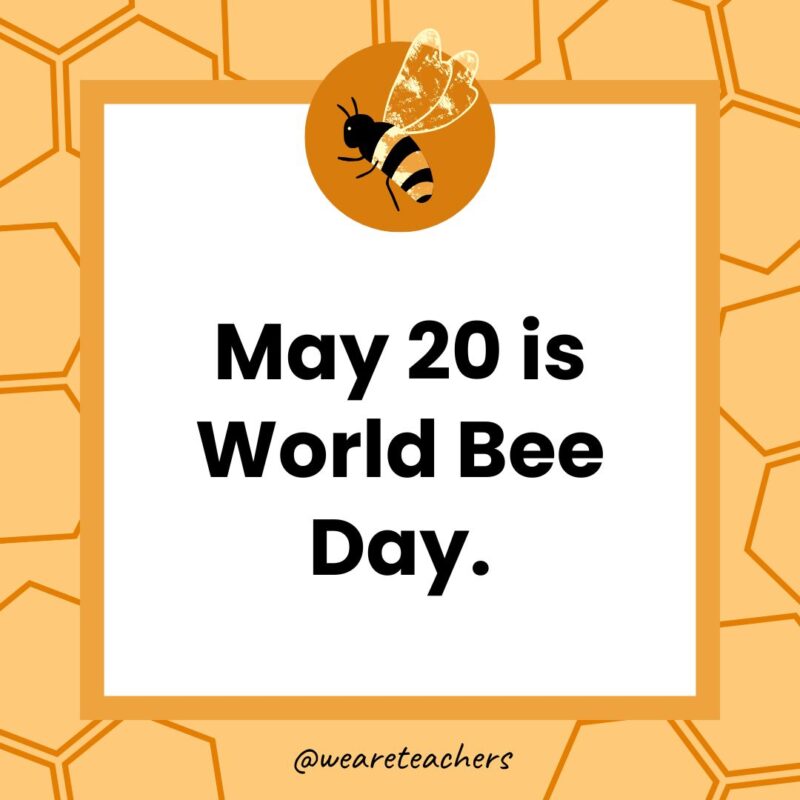
That’s right, bees are so special they even have their own holiday! It was started to spread awareness of their importance to our food chain. Long live the bees!
Ideas for Using These Facts About Bees in Your Classroom
- Use kid-friendly research tools like PebbleGo to find out more facts about bees. Students can then write their own bee reports on paper or type them up in a word-processing program.
- Have your students take their research even further by showcasing what they’ve learned in a digital workspace. They can then present their slideshows to the class and their families.
- Kids of all ages love jokes, and these insect-themed jokes and bug puns are no exception. Share them with your class and let them come up with some new ones of their own!
- Your students will love making a mirror stamped bee craft. Provide students with a bee template. Next, have them paint it with tempera paint or watercolors. Lastly, fold it in half to create an awesome mirrored design.
- Have your students design a habitat for a bee. Grab a sheet of mixed-media paper and create a design with chalk marbling. Then, cut out the bee shape using the template you provide. The colors end up looking super cool! Students then add the animal to a background page and add flowers, grass, and more to create its habitat.
- Place a Bumblebee Hotel outside your classroom window to give them a safe place to stay so they can pollinate our world. Made from environmentally friendly components, bees get the chance to rest, hibernate, nest, and lay eggs away from prying predators.
- Print out these bug and insect coloring pages for fast finishers and brain breaks. Kids love them!
- After sharing these facts about bees, dive into the world of butterflies. Then, compare and contrast the two insects using a graphic organizer, such as a Venn diagram or box chart template.
- Research the life cycle of a bee and make a detailed diagram to go with it as a class.
Free Facts About Bees Google Slides
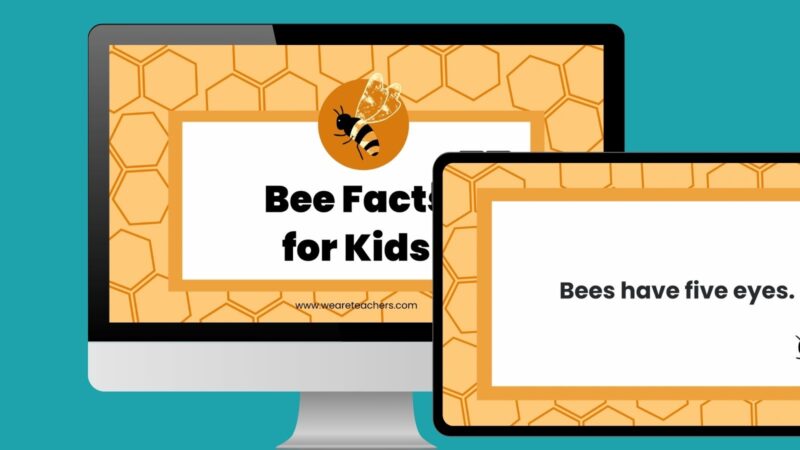
Ready to share these facts about bees? Grab your copy of our free Google Slides by filling out the form on this page.
Like these buzzworthy facts about bees? Don’t miss our big list of Animal Facts That Will Amaze You!
For more articles like this, be sure to subscribe to our newsletters to find out when they’re posted!
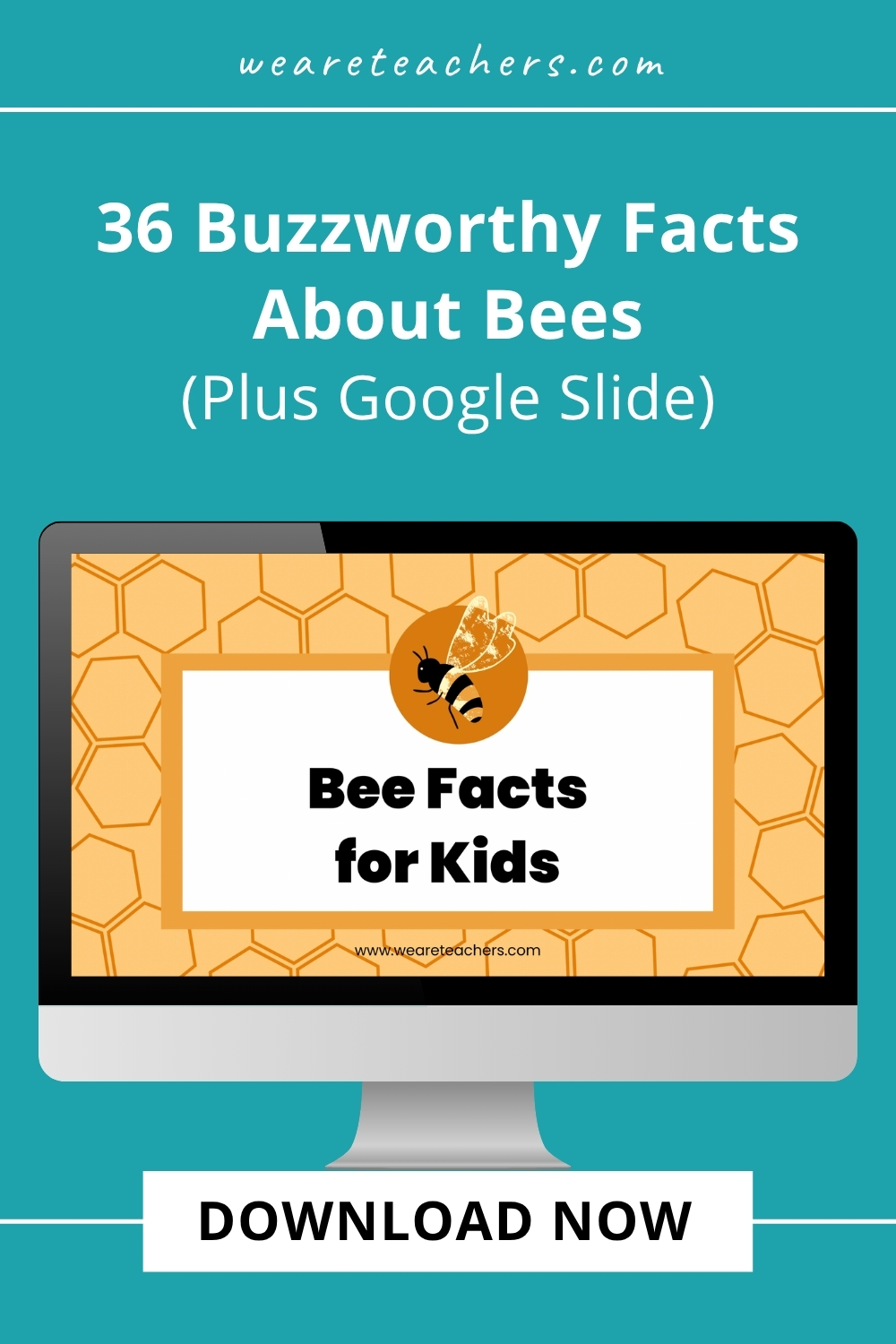
View the original article and our Inspiration here
